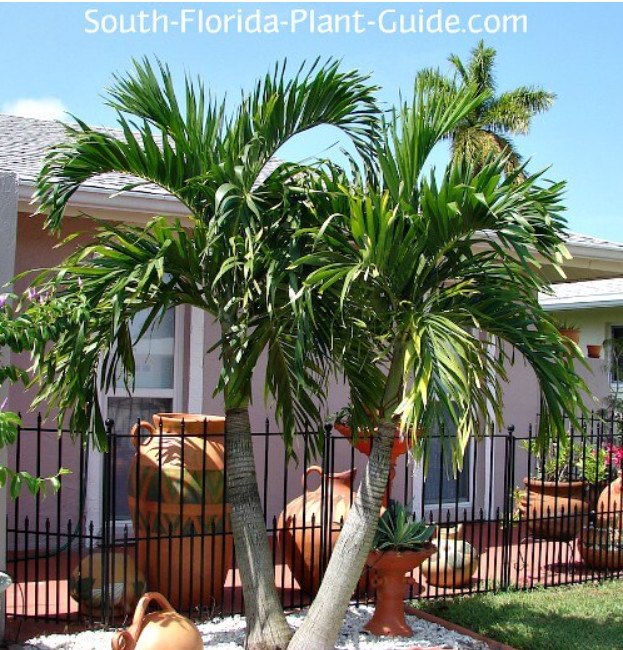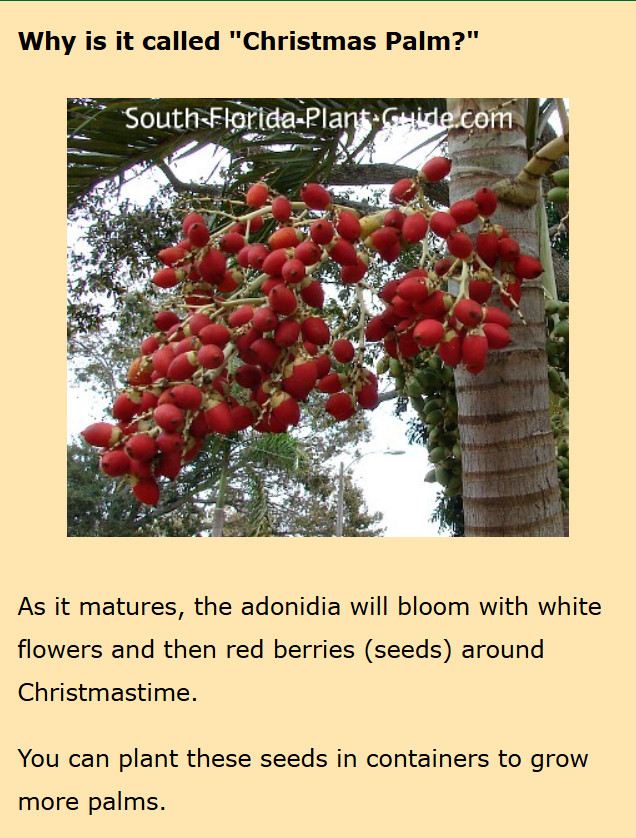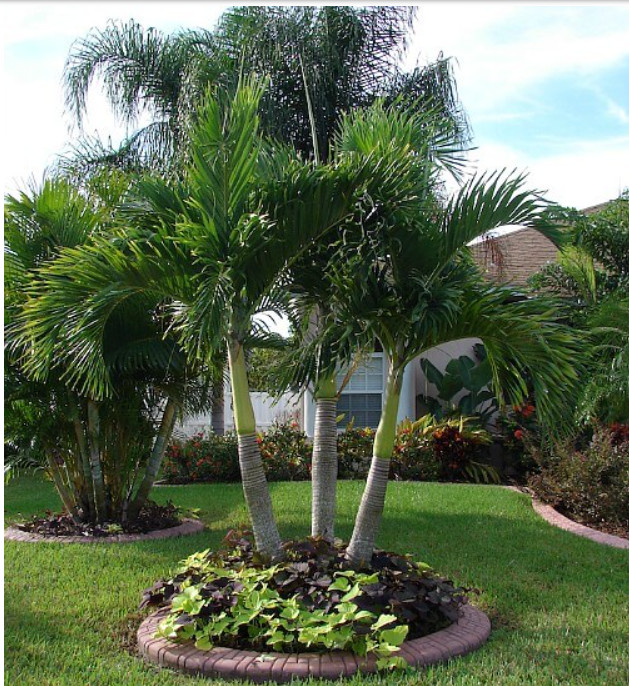Adonidia Palm
Veitchia merrillii, Adonidia merrillii
The adonidia palm - often called “Christmas Palm” - is a showy, highly ornamental palm that works beautifully in small landscape areas.
The adonidia is easy care…it's self-cleaning, meaning the spent fronds just fall off by themselves, a big low-maintenance plus. And adonidias are pretty much pest-free.
It looks like a miniature royal palm, with its green crown shaft, gray trunk and long full fronds.
Single trunk specimens work almost anywhere since they won't grow too large or too fast to overwhelm most locations.
Christmas palms make good focal points in small tropical gardens and, when taller and more mature, they can become an elegant statement palm.
They're regarded as deer resistant, though we make no guarantees.
Plant specs
Christmas palms work best in Zone 10, where in a normal winter an adonidia will do very well. To be on the safe side, plant in a location that isn't subject to cold winds or frost.
Growing slowly to an average height of 12 to 15 feet, this palm is moderately salt-tolerant - it usually won't be affected by salt spray.
A recent concern for this palm as been cold weather.
For decades we all planted adonidia palms in our yards with carefree abandon…until the winter of 2009-2010. Record cold temperatures lasting for hours over several weeks' time took their toll on this pretty little palm (and many other plants as well) throughout South Florida.
Plant care
Performing best in full sun, a Christmas palm tree can tolerate partial shade.
But too much shade causes the trunks to grow skinny and the fronds thin.
Add top soil or organic peat moss to the hole when you plant.
Fertilize with granular palm fertilizer during spring, summer and autumn…at least one application per season.
Let the fronds drop off naturally as they brown. If you can't stand the look of a browned frond, you can cut it off, but leaving them on to fall off on their own benefits the palm as dying fronds send nutrients to new ones forming.
Plant spacing
Single trunk adonidias work in tighter areas planted 5 to 6 feet away from the house to give the fronds room to grow and prevent them from surface scraping damage.
Multi-trunk palms need adequate room to spread out…the trunks will naturally bow causing the fronds to extend a bit further. Position the trunks so they won't be in the way once they gain some stature.
These palms are also easy to grow in containers. Large pots or planter boxes where they'll grow happily for some years are the best choice. Once your palm outgrows a large container it can always be planted in the garden.
Landscape uses for adonidia palm
- by the entry (mainly singles)
- accent for the corner of the house
- single yard specimen
- central anchor plant for small gardens and island beds
- in tall pool cages (interior 15’ or higher)
- center of a circular drive
- on each side of an entrance to a long driveway




